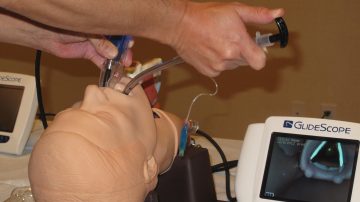In a study conducted at two academic medical centers, records showed that of 71,570 intubations 2,004 used Glidescope for airway management. Success rates and complications were documented in these Glidescope intubations. The overall success rate for Glidescope intubations was 97%. Success for Glidescope intubation following direct laryngoscopy and success in patients with predictors of difficult direct laryngoscopy were 94% and 96%, respectively.
Of the 2,004 patients, 1% experienced minor complications and only 0.3% experienced major complications. Altered neck anatomy from prior surgery, radiation changes, or a neck mass was the primary predictor of unsuccessful Glidescope intubations.
Although, these results demonstrate a high intubation success rate, Glidescope intubation is not always the most effective method of airway management. Competency with alternative methods of airway management should be maintained by healthcare providers.

